Muskrats are considered invasive and can sometimes become aggressive towards humans and pets. They are carriers of diseases and parasites that can spread to people and other animals. As such, having them around your house might not be a good idea.
If you’ve noticed some odd droppings and aren’t sure whom they belong to, check out this article that tells you everything about muskrat poop! We’ll help you distinguish it from rat, mouse, and beaver poop.
What are muskrats?
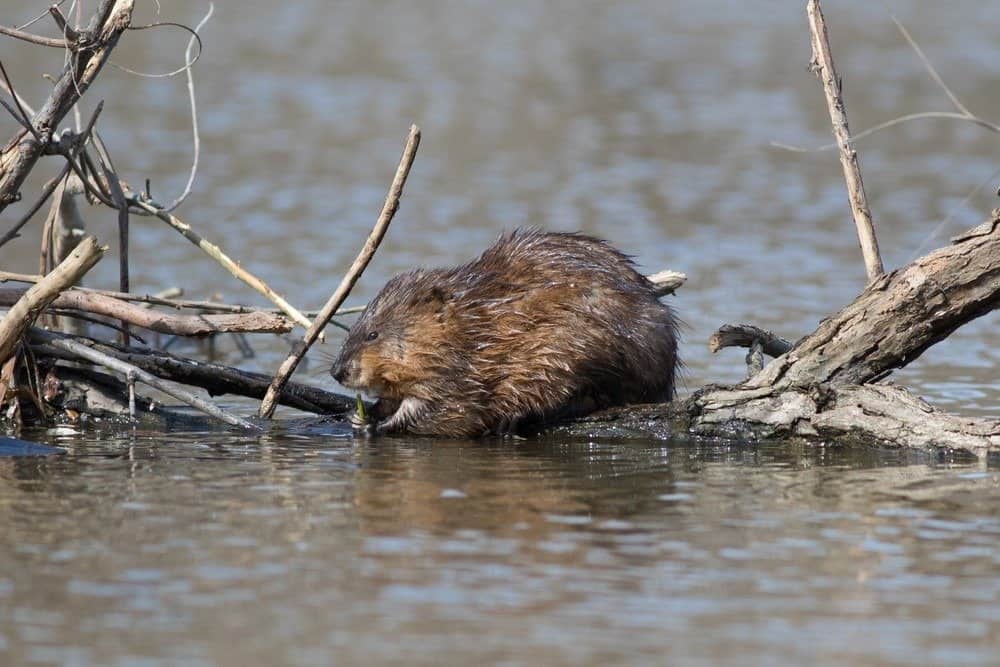
Muskrats are the only extant members of the
Ondatragenus in the
Cricetidaefamily.
©William Levesque/Shutterstock.com
Muskrats are scientifically called Ondatra zibethicus. They are the only extant members of the Ondatra genus in the Cricetidae family.
These animals can reach 25 inches long and weigh 1.5–4 pounds. Their tail adds 7–11 to the mentioned 25. Muskrats have big teeth, long whiskers, webbed hind feet, and short legs. Their brown fur is waterproof.
Muskrats are endemic to North America and can be found in freshwater lakes, swamps, and ponds. They can now be found in Europe and Northern Asia, too. These animals are solitary, except for the breeding season, when they become part of larger family groups.
Ondatra zibenthicus have a lifespan of approximately 3-4 years in the wild and up to ten years in captivity. The short lifespan in the wild is linked to the fact that they are prey to numerous other animals.
What do muskrats eat, and what eats them?
Muskrats are omnivorous, opportunistic eaters. Their primary food source is plant matter, cattail being their favorite food. That’s probably why they’re always near water, as this plant is abundant there. Other plants they like include water lilies and pond weeds. Muskrats sometimes feed on frogs, turtles, fish, snails, mussels, and crayfish.
Muskrats are prey to numerous animals, such as
- Coyotes
- Barn owls
- Alligators
- Raccoons
- Cougars
- Bobcats
- Foxes
- Otters
- Cottonmouth water moccasins
- Wolverines
- Eagles.
In the past, humans were major muskrat predators for commercial reasons. Nowadays, however, muskrat hunting has taken a different path. People have started hunting and poisoning them because they’ve become invasive and can damage dikes and levees and cause flooding. They can also damage gardens and crops.
What does muskrat poop look like?
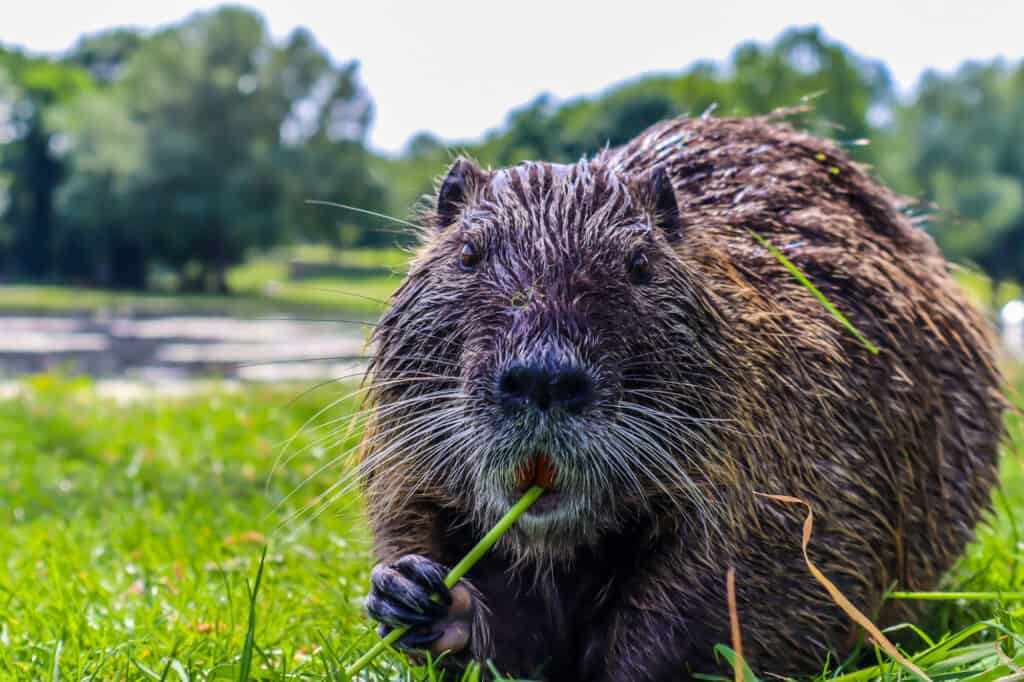
A muskrat’s excrement is small and oval-shaped.
©iStock.com/w1d
Muskrat droppings are dark brown or black and have semi-liquid consistency. A muskrat’s excrement is small and oval-shaped and may have a pointy end.
Muskrats poop on stumps, rocks, logs, or other dry, elevated surfaces. Their droppings are often found near water.
Is muskrat poop dangerous?
Muskrats carry many diseases and parasites, some of which can be contracted from muskrat poop. Here are some diseases and parasites muskrats can spread:
- Tularemia
- Leptospirosis
- Ringworm disease
- Pseudotuberculosis
- Tapeworms
- Flukes
- Ticks
- Mites
- Roundworms
While not all diseases can be contracted by touching an infected muskrat’s scat, people and animals can get infected with worms if they touch the animal’s droppings. It’s highly advisable to wear protective gloves while/if you’re handling muskrat poop and disinfect your hands or anything it comes in contact with. This way, you’ll avoid any risks of getting a disease.
Tularemia is one of the most serious diseases muskrats can spread to humans. It’s a bacterial disease that affects marsupials, sheep, cats, and other animals. Some species experience fatal septicemia if they get infected. This disease can be mild or life-threatening in humans, evolving into pneumonia or septicemia.
A study shows that tularemia can be spread through “ingestion, inhalation or contamination of mucous membranes and broken skin.” The disease can also spread if the infected animal licks, bites, or scratches a person. Can it be taken from a muskrat’s poop? Scientists don’t know yet. However, some species that have been experimentally infected showed traces of tularemia in urine and feces.
Are muskrats dangerous to humans?

Muskrats are considered aggressive animals.
©Sergey Uryadnikov/Shutterstock.com
Besides carrying numerous diseases that can be passed on to humans, muskrats are considered aggressive animals. They aren’t particularly dangerous because they’re shy and usually try to avoid humans at all costs. But if people take them by surprise or try to get in contact with them, they become quite aggressive and can even bite.
Having muskrats around the house is dangerous, especially if you have kids, who usually tend to play with animals without being aware of the risks. Unconsciously, they may provoke a muskrat and get bitten. If you notice muskrats around your house, you should contact a local pest control agency to help remove them.
How to distinguish muskrat poop?

Muskrats rarely go into people’s houses as rats and mice do.
©Blende8/Shutterstock.com
The first thing to consider when deciding whom a scat belongs to is where it’s located. Muskrats rarely go into people’s houses as rats and mice do. They like living near water. When they run out of food in their environment, they can “visit” human habitats to look for something to eat. Here’s how you can distinguish their droppings from other animals’ scat!
Muskrat poop vs. rat poop
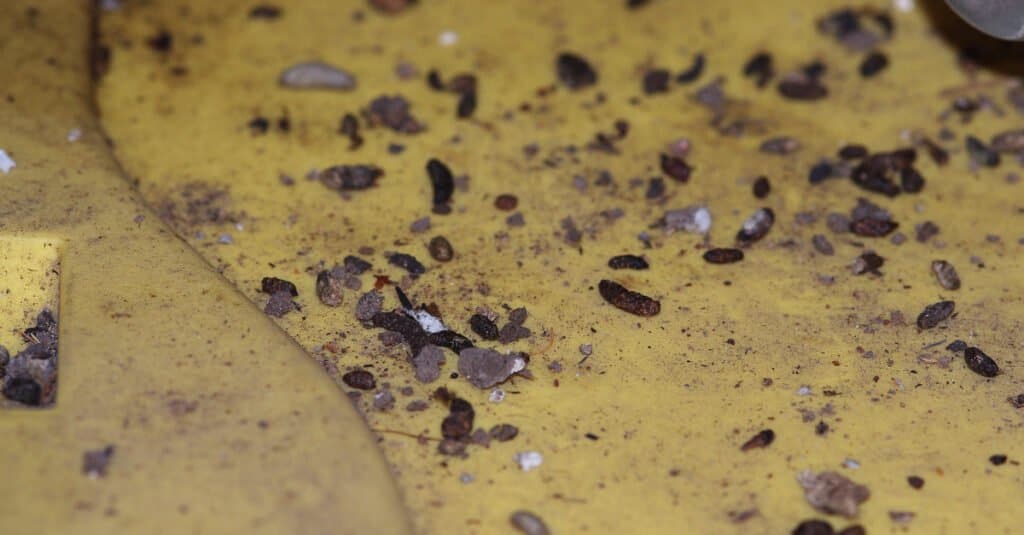
Rat droppings have a cylindrical shape.
©Photo – TMD/Shutterstock.com
Unlike muskrat droppings, which are usually oval-shaped, rat droppings have a cylindrical shape, measuring approximately 0.5–1 inch long. While muskrat poop may have a pointy end, rat poop has rounded ends. It’s also black and glossy.
Muskrat poop vs. mouse poop
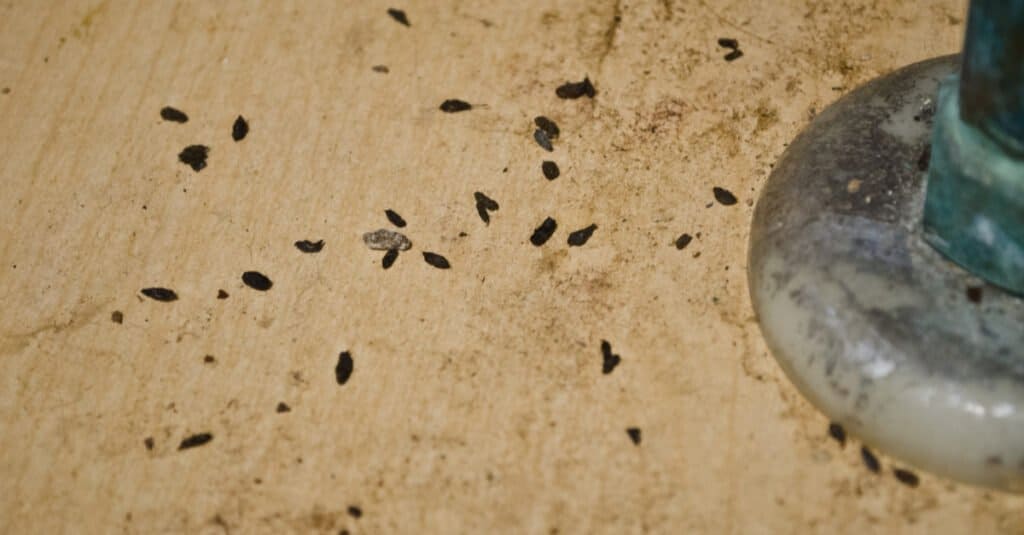
Mouse droppings are long, resembling grains of rice.
©Pegasene/Shutterstock.com
Compared to muskrat and rat poop, mouse poop is much smaller. Mouse droppings are long, resembling grains of rice.
Muskrat poop vs. beaver poop
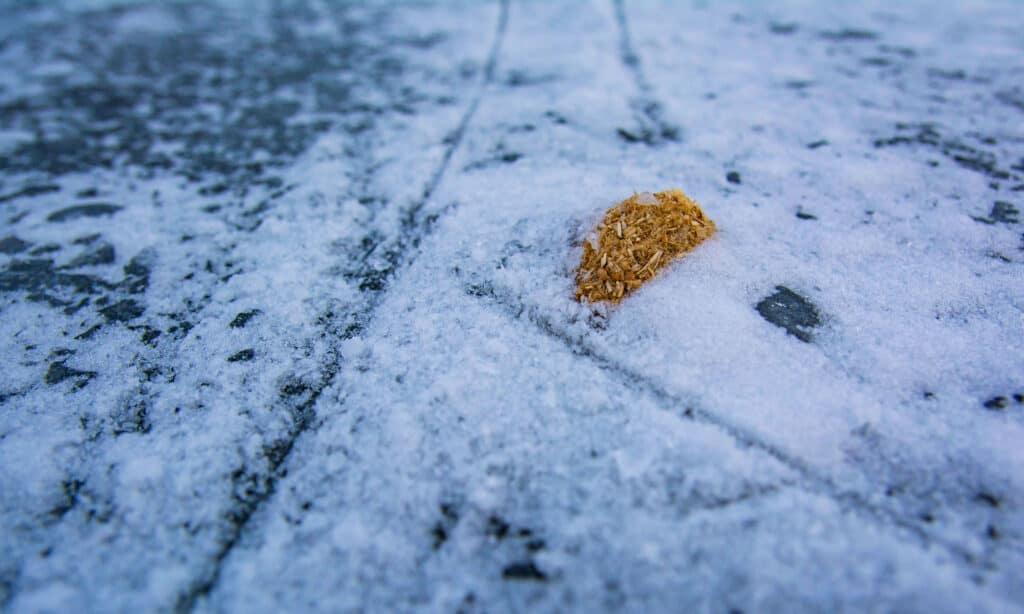
Beaver poop is cylindrical and measures 1.5–2.5 inches long.
©Aleksandra Proshina/Shutterstock.com
Unlike muskrats, beavers prefer pooping in the water or underground. If you see droppings on rocks near the water, they most probably belong to muskrats. However, some beavers can still poop near water. So if you want to ensure whose excrement it is, here’s how you can tell them apart.
Beaver poop is cylindrical and measures 1.5–2.5 inches long. It is usually hard, dry, and has a sawdust texture.
Incredible muskrat facts
- Muskrats leave “tail-tell signs.” So if you want to check if a track belongs to a muskrat, check if there’s a tail track. Because a muskrat’s tail is long, flat, vertically oriented, and covered in scales, it will likely leave tracks, too.
- Muskrats are native to North America!
- Fossil records show that muskrats appeared sometime between 4 to 5 million years ago!
- Many European countries consider muskrats an invasive species, and their importing, breeding, and even transporting are illegal.
Up Next:
- Groundhog Vs Muskrat
- Mink Vs Muskrat: What Are The Differences?
- Muskrat vs Beaver: 6 Key Differences Explained
The photo featured at the top of this post is © iStock.com/Iri_sha
Thank you for reading! Have some feedback for us? Contact the AZ Animals editorial team.






